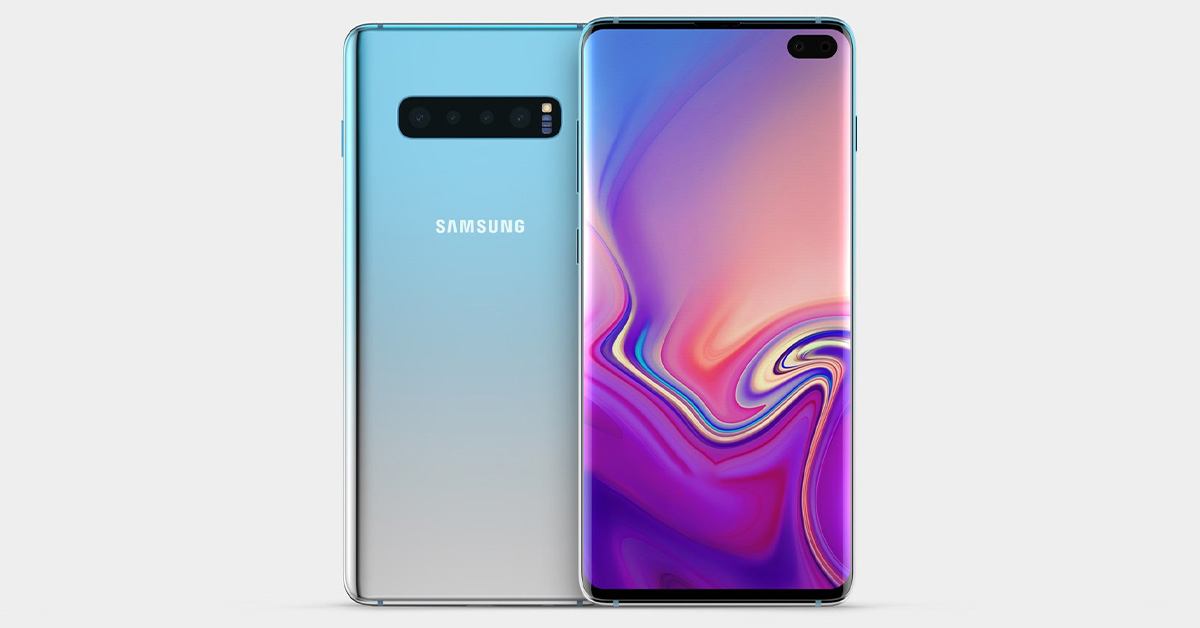
Samsung Galaxy S10 and S10 Plus display have created quite a lot of buzz. A dynamic Super AMOLED display with a whopping 1200 nits of brightness was unprecedented in the smartphone world. And the adoption of hole punch display to ditch the notch and to increase the screen-to-body ratio also impressed many. But the Ultrasonic under-display fingerprint scanner on the phone was the tech that got a major amount of attention. It’s the first smartphone to incorporate the technology. The Samsung Galaxy S10 Plus in-display fingerprint sensor is also by far one of the fast and accurate scanners. But many of us were wondering if the fingerprint scanner would unlock the device with the dirty and wet fingers and with the screen protectors. And to answer the question, Marques Brownlee aka MKBHD performed the test and we finally got the answer.
Before diving straight into the test results, let me elaborate the working process of the Ultrasonic fingerprint scanner on the Galaxy S10 and S10 Plus.
How Ultrasonic fingerprint scanners work?
We have already seen under-display fingerprint scanners on various devices. Vivo V11 Pro, OnePlus 6T, and Huawei Mate 20 Pro are a few among the many. All these smartphones used the optical fingerprint scanner, which basically captures 2D images of the finger and unlocks the device accordingly. But the working on Ultrasonic fingerprint scanners is entirely different.
The scanner setup basically consists of a transmitter and a receiver. The transmitter of the scanner projects a very high frequency ultrasonic sound. The frequency of the ultrasonic sound is so high that the human ears cannot hear it. When the scanner projects the sound, it will strike the user’s fingerprint when placed on the top of it. Some portion of the ultrasonic waves gets absorbed and some of them get bounced back. The wave that has been bounced back is addressed by the receiver. When the receiver receives the bounced back waves, the scanner does a 3D mapping of the fingerprint registering all the ridges, pores and other details of the finger.
When Qualcomm announced its 3D in-display ultrasonic fingerprint scanner, it mentioned that there will a 250 milliseconds (or 0.25 second) of latency while unlocking the device. The time required is roughly similar to the speed of the conventional capacitive fingerprint scanners. Qualcomm also announced that the error rate on this piece of tech will be 1 percent or less, which is comparable to all the conventional type of fingerprint scanners.
Samsung Galaxy S10 Plus in-display fingerprint scanner test
Firstly MKBHD tested the speed of the scanner comparing side by side with the OnePlus 6T. On doing so, the phone unlocked tad bit faster than the OnePlus 6T. In addition to faster speed, the advantage on the S10 Plus was that user also don’t have to place their finger on the top of the scanner until the device gets unlocked. In the smartphones like OnePlus 6T and Mate 20 Pro, users need to keep their finger on the top of the display for quite sometime, which can get annoying at times.
MKBHD also tested the accuracy of the scanner with his wet hands. In that test, the optical fingerprint scanner on OnePlus 6T failed to identify the finger, whereas the Ultrasonic scanner on the S10 Plus identified and unlocked the device without any issues.
Lastly, he tested the device with a screen protector on the device. And the device get unlocked without any issues. Pleased be noted that the screen protector was not placed that well and there were a fair number of air gaps. Nonetheless, the device unlocked abruptly. However, on placing a tempered glass, the device failed to register the finger. So, that means, we should use a tempered glass with a hole on the place of fingerprint sensor? We don’t know that yet.
MKBHD registered his finger by without applying the tempered glass. So when he placed his finger on the screen after putting on the tempered glass, the 3D mapping done by the scanner might have been inaccurate. On placing the tempered glass, the distance between the scanner and the finger increases, due to which the 3D mapping might have been altered. That could be the reason for the device to remain locked at that moment.
But that’s just a guess. Since we don’t have the phone on our hands, we are unable to speak anything solid on the subject yet. But when we get the device, we will surely try that and answer it out on our full review. If you are curious to know how will the device fare in that, subscribe to our YouTube channel and stay tuned for our Samsung Galaxy S10 Plus full review.







![Best Gaming Laptops in Nepal Under Rs. 250,000 (रु 2.5 Lakhs) [2025] Best Gaming Laptops Under 2.5 lakhs in Nepal [Feb 2025 Update]](https://cdn.gadgetbytenepal.com/wp-content/uploads/2025/02/Best-Gaming-Laptops-Under-2.5-lakhs-in-Nepal-Feb-2025-Update.jpg)
![Best Gaming Laptops in Nepal Under Rs. 120,000 (रु 1.2 Lakhs) [2025] Best Budget Gaming Laptops Under Rs 120000 in Nepal 2025 Update](https://cdn.gadgetbytenepal.com/wp-content/uploads/2025/05/Best-Budget-Gaming-Laptops-Under-Rs-120000-in-Nepal-2024-Update.jpg)
![Best Laptops Under Rs. 80,000 in Nepal [2025] Best Laptops Under 80,000 in Nepal March 2025 Update](https://cdn.gadgetbytenepal.com/wp-content/uploads/2025/03/Best-Laptops-Under-80000-in-Nepal-March-2025-Update.jpg)
![Best Gaming Laptops in Nepal Under Rs. 200,000 (रु 2 Lakhs) [2025] Best gaming lapotp under 2 lakhs Nepal Feb 2025](https://cdn.gadgetbytenepal.com/wp-content/uploads/2025/01/Best-Gaming-Laptops-Under-2-Lakh-Nepal-Feb-2025-Update.jpg)

![Best Mobile Phones Under Rs. 15,000 in Nepal [Updated 2025] Best Phones Under 15000 in Nepal 2024 Budget Smartphones Cheap Affordable](https://cdn.gadgetbytenepal.com/wp-content/uploads/2024/03/Best-Phones-Under-15000-in-Nepal-2024.jpg)
![Best Mobile Phones Under Rs. 20,000 in Nepal [Updated] Best Mobile Phones Under NPR 20000 in Nepal 2023 Updated Samsung Xiaomi Redmi POCO Realme Narzo Benco](https://cdn.gadgetbytenepal.com/wp-content/uploads/2024/01/Best-Phones-Under-20000-in-Nepal-2024.jpg)
![Best Mobile Phones Under Rs. 30,000 in Nepal [Updated 2025] Best Phones Under 30000 in Nepal](https://cdn.gadgetbytenepal.com/wp-content/uploads/2025/01/Best-Phones-Under-30000-in-Nepal.jpg)
![Best Mobile Phones Under Rs. 40,000 in Nepal [Updated 2025] Best Phones Under 40000 in Nepal 2024 Smartphones Mobile Midrange](https://cdn.gadgetbytenepal.com/wp-content/uploads/2024/02/Best-Phones-Under-40000-in-Nepal-2024.jpg)
![Best Mobile Phones Under Rs. 50,000 in Nepal [Updated 2025] Best Phones Under 50000 in Nepal](https://cdn.gadgetbytenepal.com/wp-content/uploads/2025/01/Best-Phones-Under-50000-in-Nepal.jpg)
![Best Flagship Smartphones To Buy In Nepal [Updated] Best flagship phone 2025](https://cdn.gadgetbytenepal.com/wp-content/uploads/2024/07/Best-Flagship-Phones-who-is-it-ft-1.jpg)